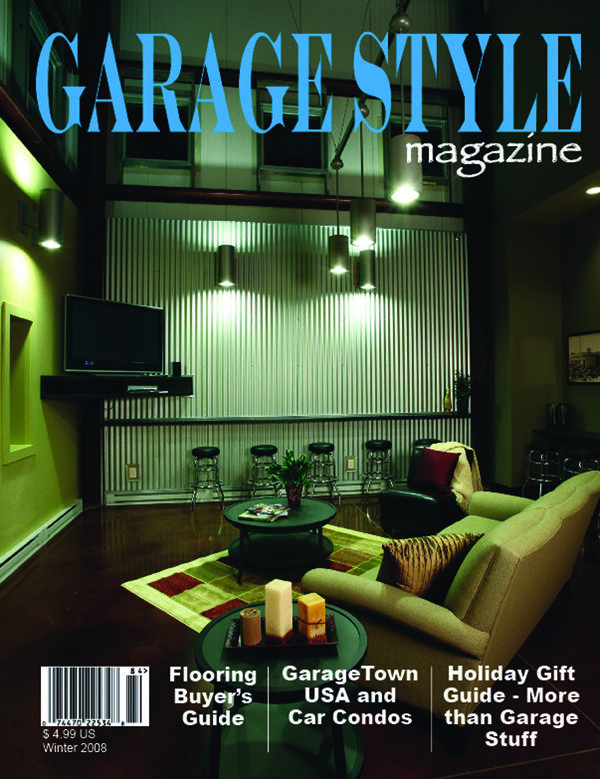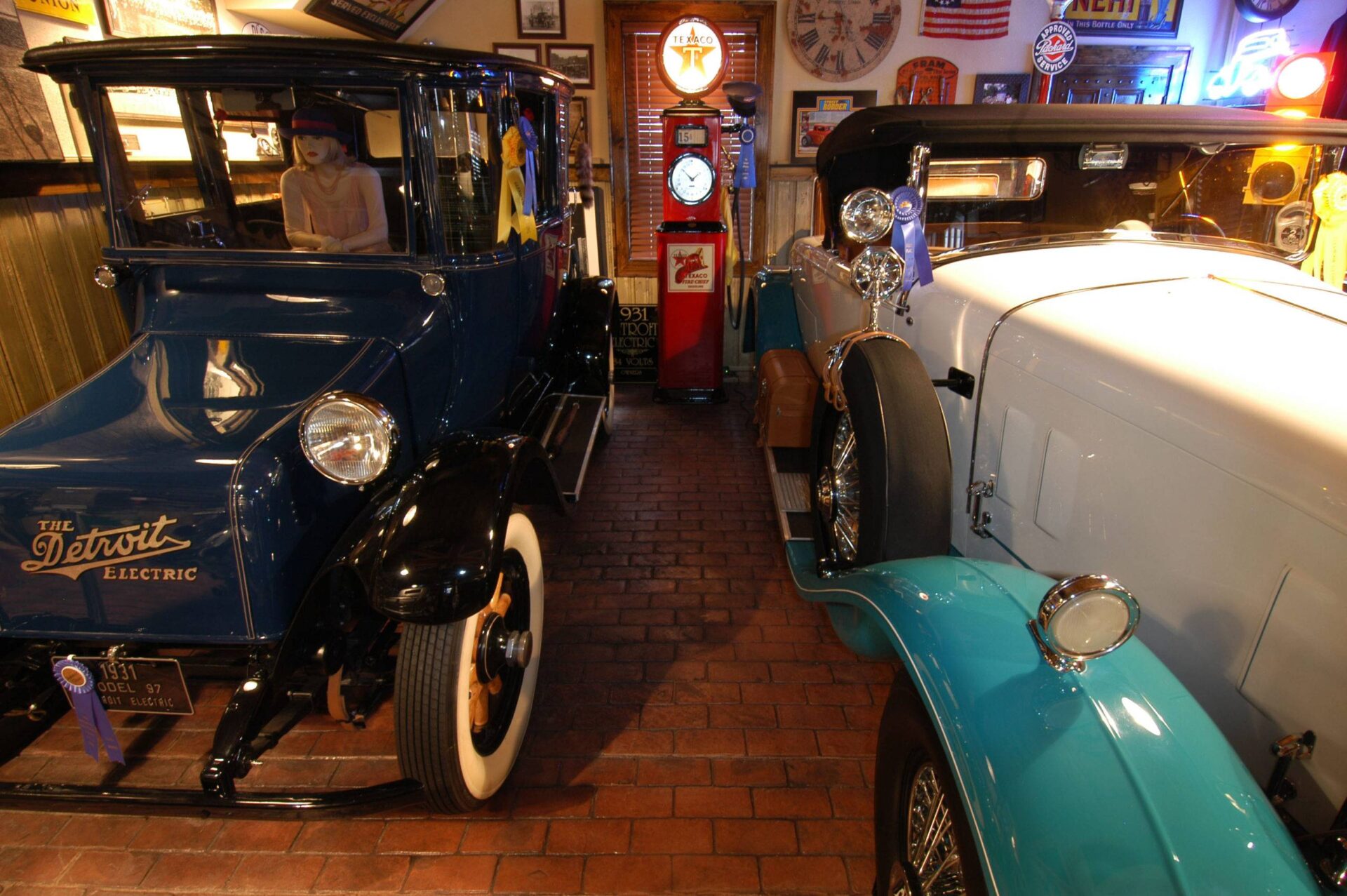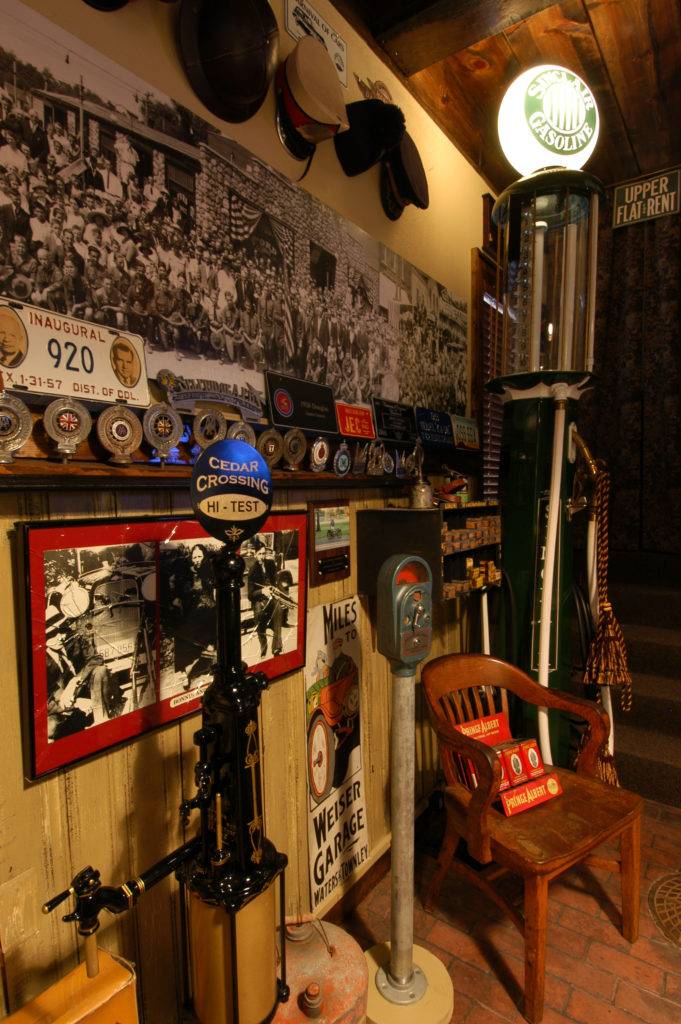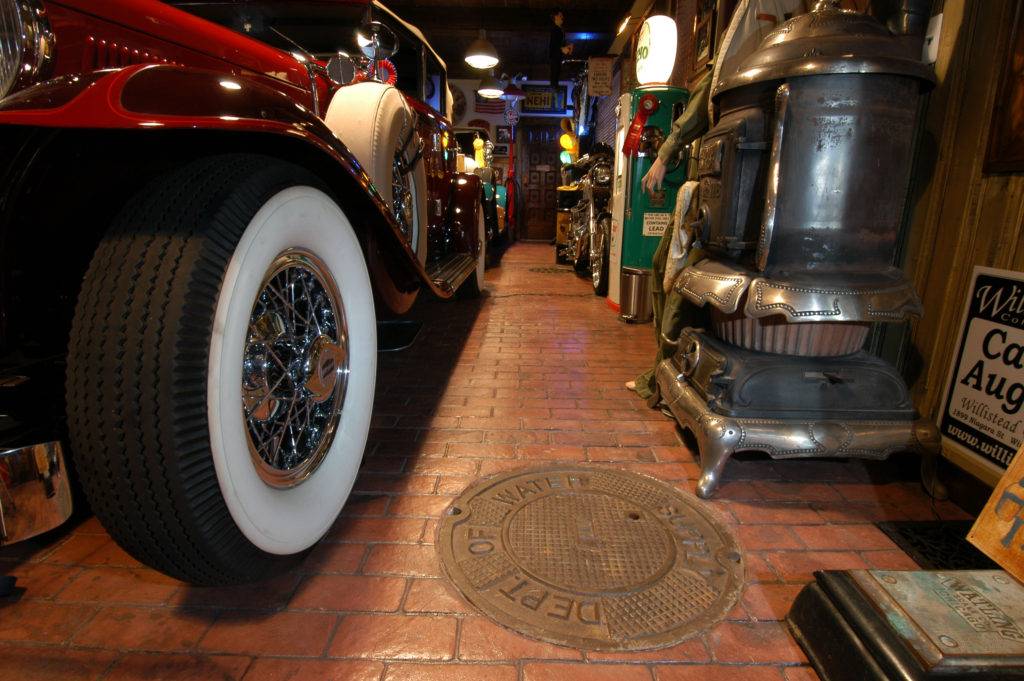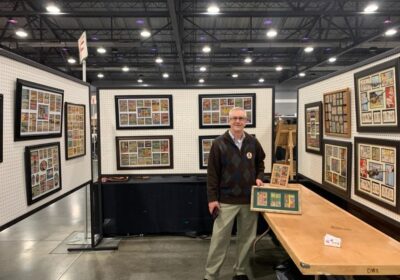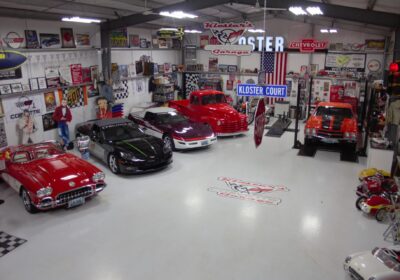After just a year and a half of work, (James) Cousens built and furnished a garage where everything inside gives the place a feeling it is 100 years old. The eight-car garage is built on one of Henry Ford’s former tractor proving grounds. Successful interior designer Cousens, who counts rock stars as clients, knows well how to decorate for a historical period and how to make the illusion of old architecture out of new materials. He is trimming his collection of large, immaculate Packards in favor of antique electric cars, which he describes as being built with the craftsmanship of a music box.
Stepping into Cousens’ place makes you think of ancient Detroit, the very early days of brick pavement and leather-strapped steamer trunks.
“I work pretty fast. Of course, I had a lot of this stuff, and I go to all the swap meets, buy all the stuff and it ends up more and more,” Cousens explains. For example, on one wall is the upright radiator from an ancient MG. “I just bought it to put a screen in it for decoration.”
Cousens’ had a reasonably large three car garage that was already attached to his 10-year-old house, but that has become the workshop.
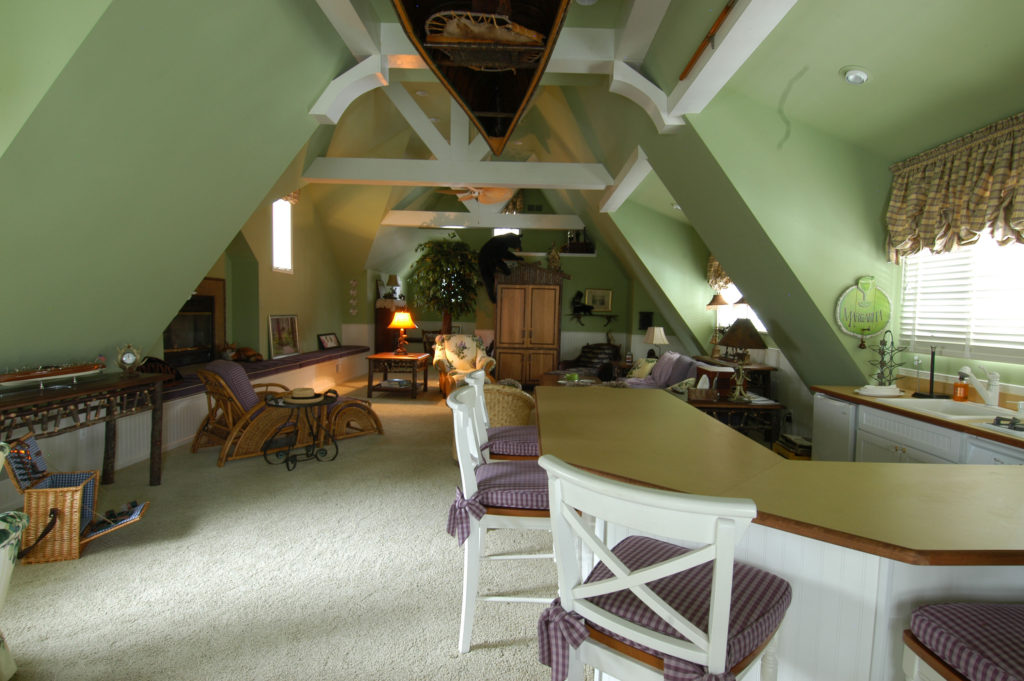
“What happens is you start collecting and then your garage gets to be too small. I just thought, in my mind, when I was building the new garage, just let me have a garage where I could put five or six cars and I’ll be a happy camper. But that’s not what happens in this hobby. The hobby gets to be addictive; it’s like nicotine once you start doing it. So I cannot ever have just six cars. It’s just impossible, so I’ve outgrown the space. For somebody who’s just starting and has one or two cars, this is perfect. I’ve got more than six jammed in here.”
Twelve years ago Cousens decided to reignite his car passions by getting an old MG, and then when he moved into his current home he bought a completed hot rod, a ’37 Ford. Then he built another one.
“Then my buddy said, ‘You’ve got to get into classic cars.’ He said that because I had $80,000 in the hot rod I built, and when I went to sell it I could only get $40,000, and he said hot rods are a dead end street. He told me about classics, that if you paid $100,000, you can auction them in a year or two and down the road you can get $120-$130,000. They appreciate, like antiques. So he sold me a Model T. I became a classic guy. Now I’ve got a Lincoln, I’ve got a Chrysler Airflow.”
“Now I’m changing again, I’m going to go all electric—I’m buying electrics. I have a 1905 Woods Electric Car. When they sold you a car you would get the charger. It looks like a Frankenstein machine, you throw the switch and you see the ZAAAAPPTT. This is a very rare car, the only one known to exist. It’s got a detachable brougham top which would make it into a Victoria, which would be a little convertible. Woods vehicles were made in Chicago. I’ve also got a 1931 Detroit Electric. The Milburn I’m working on in the other garage. And I’ve got a 1906 Columbia in restoration, a 1912 Baker in restoration. I’ve got a 1925 Ward, a 1909 Walker. It’s crazy. It’s addictive. So I finally settled in on my niche – it’s going to be electric.”
Since Cousens’ garage has only one door, he installed a turntable from a car show.
“Typically I’ll put a car in the center of this turntable and, of course, the turntable will go either way. That way you could drive the cars whose steering wheels won’t turn on a dime, so you pull it on the turntable, turn the turntable and then go ahead and stack them in the garage.”
When Cousens reflects on his garage, he can point to hundreds of details that give it the look of history.
“This is not old, this is brand new. But it looks old,” he describes. “I’m just a guy working for a living, so I’ve got do it with talent and mirrors. It depends on the degree of finished trim. If you do a plain building you can build that building for $25,000, then you can doll it up for another $25,000, and you have 50 grand in it. The trim is where you can spend a lot of money. But if I was on a limited budget, I’d trick it up rather than buy the fancy stuff. This was very costly to do the walls with tongue-in-groove, then to have the textured paint put on, every detail thought about. If you were doing it on a budget you would do plain drywall and you could actually wallpaper or do something to create the look without spending the amount of money for the lumber, and then the painter to paint it and then to antique it so it looks old.”
“What I did copy from the Ethel Ford mansion is in their garage door: they had a secret door inside also. Its a little man door, you don’t know it’s there, but that thing swings out and you can step in without having to open the big garage door. And the lights, there’s a manufacturer that makes antique replicas, like warehouse lanterns, and I wanted that look. Those chimney stacks are off old buildings in London that I imported over. They demolished some old buildings and I bought the stacks. And that iron work up on the top, we replicated that from Biltmore Mansion. Those Spires are six feet tall. Most people look at and it looks about three feet. This whole garage floor is nothing more than poured concrete that I had stamped into a brick pattern. My sister works at the county road commission, so I grabbed the old storm drains and we imbedded those. So it looks like a road.”
Although the look is vintage, the trip back in Cousens’ time machine was brief.
